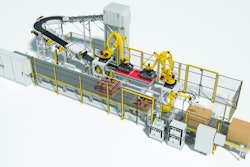
Ownership changes between two companies typically fall under the phrase “mergers and acquisitions,” but at least in pet food, “acquisition” is the word most often in play, with one party buying the other. That’s one reason why the recent announcement about the Natural Balance Pet Foods and Canidae Pet Foods deal is interesting: It’s a true merger of the companies, according to executives of both.
Both companies will retain and maintain their own pet food brands, the executives told my colleague, Tim Wall, during Global Pet Expo, and their respective private-equity owners will have 50-50 ownership of the new company, which is likely to be renamed after the deal closes.
“After that there’s going to be an integration process between the two companies, which will ultimately end up with the two brands to be managed by the same company,” said Jacopo D'Alessandris, co-CEO and chief commercial officer at Canidae.
When synergy is real
Merger & acquisition (M&A) announcements often rhapsodize about the synergy envisioned by the people orchestrating a deal, though often the acquiring company is the one determining what gets synergized and by whom.
Yet the Canidae-Natural Balance merger does seem to promise actual synergy, especially when it comes to production: Currently, Natural Balance follows a co-packing strategy, while Canidae owns it own plant and produces more than 90% of its own products, D’Alessandris said. After the deal closes, the Canidae facility will produce some Natural Balance pet foods, though Brian Connolly, CEO of the latter, said co-packing will continue to be part of the new company’s strategy.
Supply chain integration, including ingredient sourcing, is another area where opportunities for synergy may arise for the combined portfolio.
A merger model for others?
Canidae and Natural Balance share some similarities going into the merger, including market positioning – both feature premium product lines sold mostly via pet specialty channels – and, presumably, size. According to the Pet Food Top Companies Database, Natural Balance had annual revenues of US$264 million in 2021. As a private company, Canidae doesn’t report its revenue, but besides owning a facility, it holds a partnership in a farm to grow its own ingredients, likely indicators of a size comparable to Natural Balance’s.
(Note that the database will be updated in June with 2022 revenues.)
Could this merger of two similar pet food companies prove to be a model for others going forward? Looking at the list of largest pet food players worldwide, you can see that, below the top seven to 10, several companies fall into a certain tier of revenue, followed by other tiers also with multiple companies in them. Rather than some of the larger companies buying ones in the lower tiers, might other companies benefit from combining forces to better compete in the marketplace?

















